What Those Small Numbers On Bottom Of Plastic Containers Mean?
If you look on the bottom of a plastic water bottle, food container or any other plastic-packaged products, you’ll find a small number inside a triangle. But did you ever wonder what this number means? While you may think nothing of these numbers, they can actually offer a great deal of information regarding the toxic chemicals used in the plastic, how likely the plastic is to leach, how un-bio-degradable the plastic is, and ultimately the safety of the plastic.
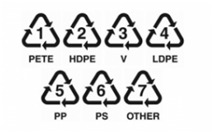
Here is some information on the various recycling symbols and numbers:
Number 1 Plastics — PET or PETE (polyethylene terephthalate)
- It is most commonly used plastic
 found in water bottles and soft drinks bottles.
found in water bottles and soft drinks bottles. - This type of plastic is intended for one time use. PET plastic should not be reused because cleaning detergents and high temperatures can cause chemicals to leach out of the plastic into the water. These chemicals can have a significant effect on our health.
- Recycling rates of this plastic is relatively low (around 20 percent).
Number 2 Plastics — HDPE (high density polyethylene)
- High-density polyethylene (HDPE) is a
 polyethylene thermoplastic made from petroleum.
polyethylene thermoplastic made from petroleum. - It’s found mostly in milk jugs, plastic bags, shampoo bottles, juice bottles, motor oil bottles, yogurt tubs, butter tubs etc.
- HDPE is hard, opaque and can remain unaffected by high temperatures.
- This plastic practically releases no chemicals, therefore no health concerns for consumers. These bottles are highly recommended by experts when buying bottled water. HDPE plastics also have one of the highest recycling rates.
Number 3 Plastics — V (Vinyl) or PVC
- Polyvinyl chloride (PVC) is a thermoplastic
 polymer. These type plastic is commonly found in window cleaner and detergent bottles, shampoo bottles, cooking oil bottles.
polymer. These type plastic is commonly found in window cleaner and detergent bottles, shampoo bottles, cooking oil bottles. - Plastic bottles labelled with 3V or PVC is highly hazardous and should be avoided.
- It discharges 2 toxic chemicals that influence the hormones in body. These type of plastics are rarely recycled.
Number 4 Plastics — LDPE (low density polyethylene)
- Low-density polyethylene (LDPE
 ) is a thermoplastic made from petroleum. It can be found translucent or opaque.
) is a thermoplastic made from petroleum. It can be found translucent or opaque. - It is used to make grocery bags, some food wraps, squeezable bottles, and bread bags.
- These plastics do not release any substances or chemicals harmful for our health. Recycling rates of this plastic is low.
Number 5 Plastics — PP (polypropylene)
- Polypropylene (PP) is a thermoplastic
 polymer. It is strong, tough, has a high heat resistance and low moisture intake.
polymer. It is strong, tough, has a high heat resistance and low moisture intake. - It is regarded as one of the “safest” plastics produced today.
- PP is generally found in squeezable bottles, syrup bottles, ketchup bottles, bottle caps, straws and medicine bottles. This plastic is gradually becoming more accepted by recyclers.
Number 6 Plastics — PS (polystyrene)
- Polystyrene (PS) is a petroleum-base
 d plastic. Polystyrene is widely used in packaging materials and insulation.
d plastic. Polystyrene is widely used in packaging materials and insulation. - It is commonly found in disposable plates and cups, egg cartons, carry-out containers, aspirin bottles, compact disc cases.
- This type of plastic is difficult to recycle and also been shown to release dangerous toxins over time into anything packaged in it.
Number 7 Plastics — PC (Polycarbonate) or non-labelled plastic
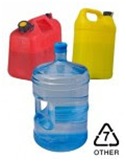
It is the most dangerous plastic in the food production which releases BPAchemicals and it is often used in the production of 3-5 gallon water bottles and food containers. These plastics have traditionally not been recycled.
To summarize, plastics in categories #2, #4 and #5 are generally considered safe.
Plastic #1 is safe but should not be re-used due to the risk of growing bacteria. Any of the other categories should be used with extreme caution, especially around food or drink, and the risk is even greater when heating food. For microwaving, know that microwave safe containers aren’t necessarily healthy, they just won’t melt.
Do yourself, your body, and the environment a favor – avoid plastic entirely and stick to glass when you can.







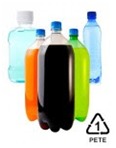 found in water bottles and soft drinks bottles.
found in water bottles and soft drinks bottles. polyethylene thermoplastic made from petroleum.
polyethylene thermoplastic made from petroleum.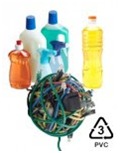 polymer. These type plastic is commonly found in window cleaner and detergent bottles, shampoo bottles, cooking oil bottles.
polymer. These type plastic is commonly found in window cleaner and detergent bottles, shampoo bottles, cooking oil bottles.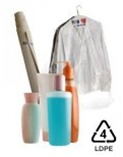 ) is a thermoplastic made from petroleum. It can be found translucent or opaque.
) is a thermoplastic made from petroleum. It can be found translucent or opaque.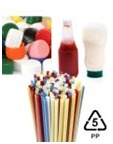 polymer. It is strong, tough, has a high heat resistance and low moisture intake.
polymer. It is strong, tough, has a high heat resistance and low moisture intake. d plastic. Polystyrene is widely used in packaging materials and insulation.
d plastic. Polystyrene is widely used in packaging materials and insulation.
Leave a Reply